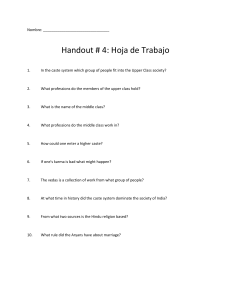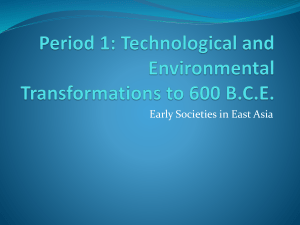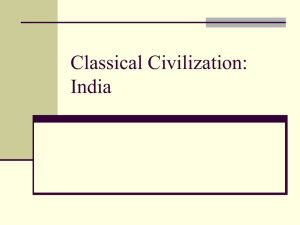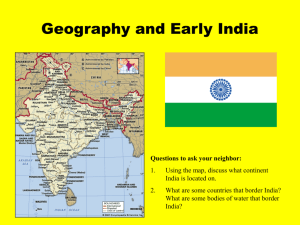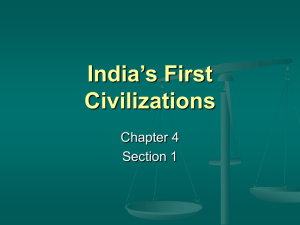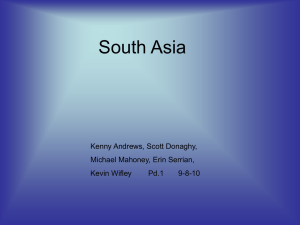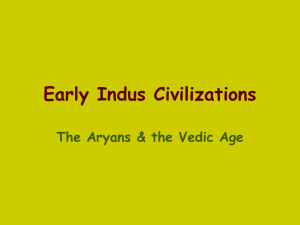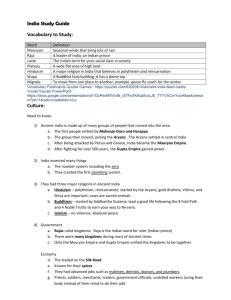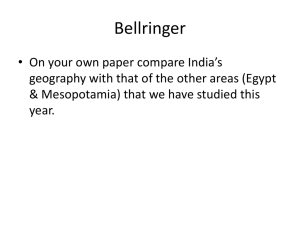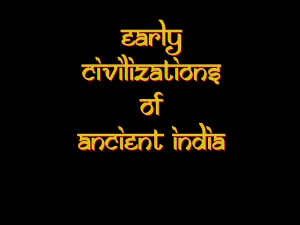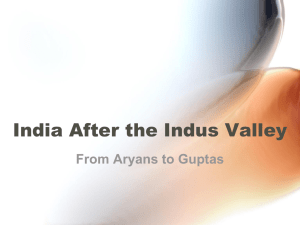Regional Outline for
advertisement
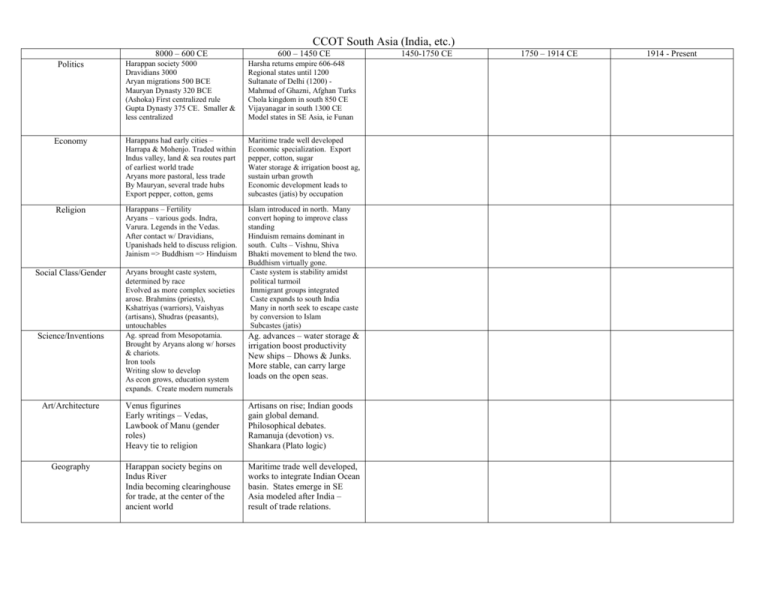
CCOT South Asia (India, etc.) 8000 – 600 CE 600 – 1450 CE Politics Harappan society 5000 Dravidians 3000 Aryan migrations 500 BCE Mauryan Dynasty 320 BCE (Ashoka) First centralized rule Gupta Dynasty 375 CE. Smaller & less centralized Harsha returns empire 606-648 Regional states until 1200 Sultanate of Delhi (1200) Mahmud of Ghazni, Afghan Turks Chola kingdom in south 850 CE Vijayanagar in south 1300 CE Model states in SE Asia, ie Funan Economy Harappans had early cities – Harrapa & Mohenjo. Traded within Indus valley, land & sea routes part of earliest world trade Aryans more pastoral, less trade By Mauryan, several trade hubs Export pepper, cotton, gems Maritime trade well developed Economic specialization. Export pepper, cotton, sugar Water storage & irrigation boost ag, sustain urban growth Economic development leads to subcastes (jatis) by occupation Religion Harappans – Fertility Aryans – various gods. Indra, Varura. Legends in the Vedas. After contact w/ Dravidians, Upanishads held to discuss religion. Jainism => Buddhism => Hinduism Social Class/Gender Aryans brought caste system, determined by race Evolved as more complex societies arose. Brahmins (priests), Kshatriyas (warriors), Vaishyas (artisans), Shudras (peasants), untouchables Ag. spread from Mesopotamia. Brought by Aryans along w/ horses & chariots. Iron tools Writing slow to develop As econ grows, education system expands. Create modern numerals Islam introduced in north. Many convert hoping to improve class standing Hinduism remains dominant in south. Cults – Vishnu, Shiva Bhakti movement to blend the two. Buddhism virtually gone. Caste system is stability amidst political turmoil Immigrant groups integrated Caste expands to south India Many in north seek to escape caste by conversion to Islam Subcastes (jatis) Science/Inventions Art/Architecture Geography Ag. advances – water storage & irrigation boost productivity New ships – Dhows & Junks. More stable, can carry large loads on the open seas. Venus figurines Early writings – Vedas, Lawbook of Manu (gender roles) Heavy tie to religion Artisans on rise; Indian goods gain global demand. Philosophical debates. Ramanuja (devotion) vs. Shankara (Plato logic) Harappan society begins on Indus River India becoming clearinghouse for trade, at the center of the ancient world Maritime trade well developed, works to integrate Indian Ocean basin. States emerge in SE Asia modeled after India – result of trade relations. 1450-1750 CE 1750 – 1914 CE 1914 - Present
